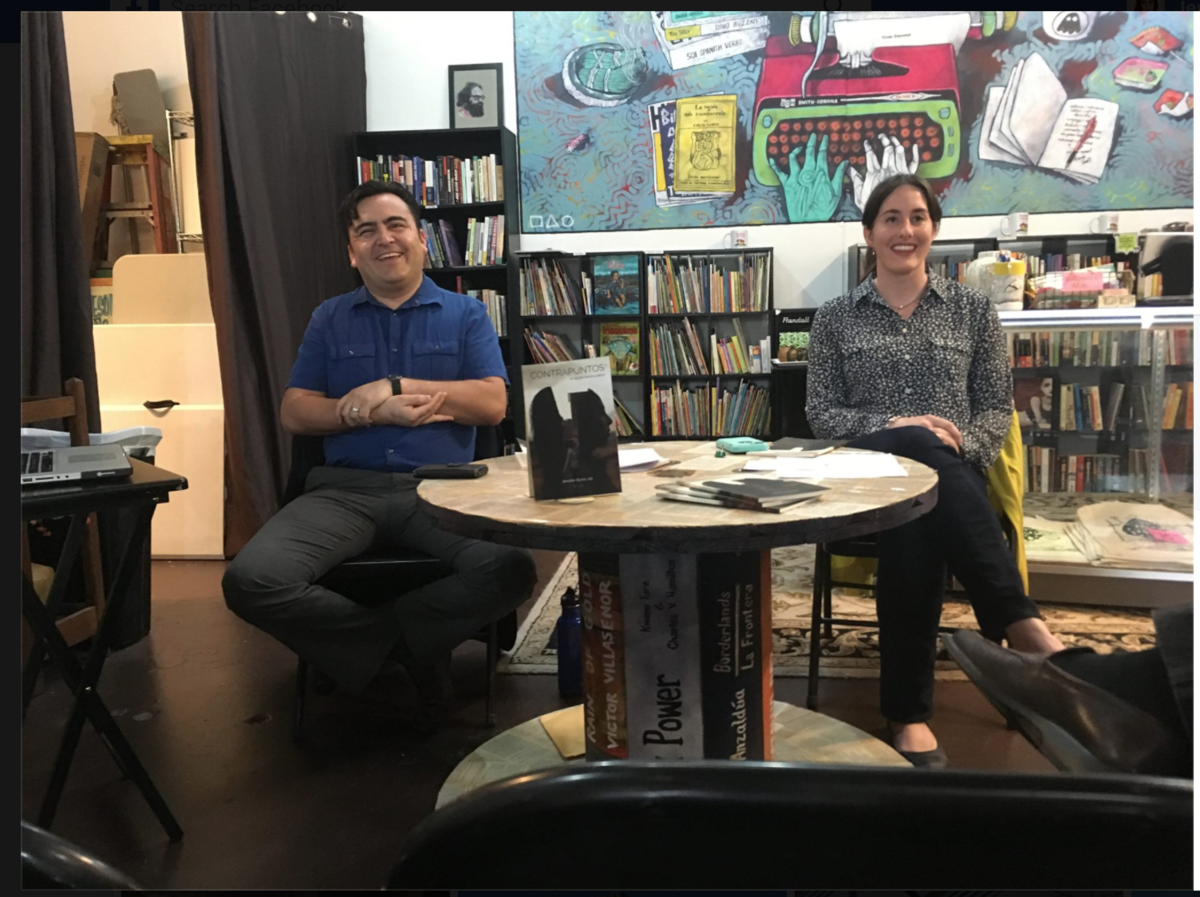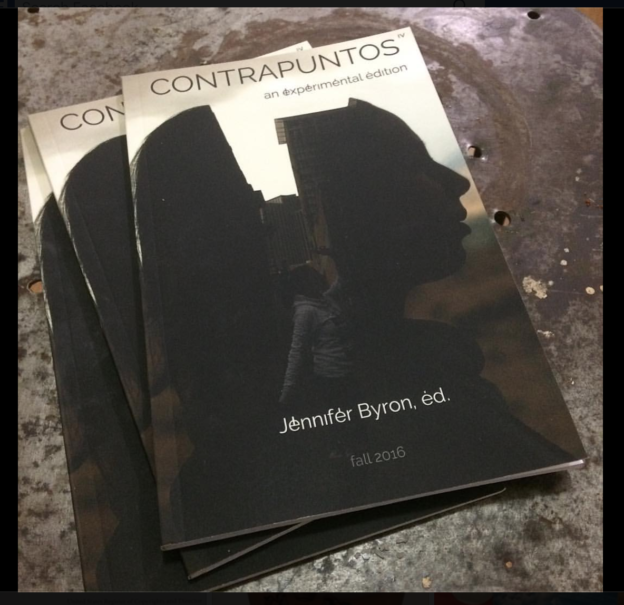Hello everyone! The presentation of Contrapuntos IV in Phoenix, AZ at Palabras Librería/ Bookstore on February 11th went very well. We had a good turn-out, especially being that it took place during a Saturday afternoon. We really appreciated all the support!

I just wanted to (finally) write more about the project as I wrote that I would. It began as a digital literary bilingual magazine, and for this edition Marcos Pico (who established the Digitus Indie Publishing which publishes the Contrapuntos magazines) decided he wanted to create a print copy as well.
I became involved in this project in the Fall of 2015 when Marcos, a fellow graduate student of Spanish literature at ASU, approached me and asked if I would like to be a guest editor for the newest edition of Contrapuntos. With every edition, there is a new guest editor, and they are responsible for picking the theme and creating a list of possible contributors to the magazine.
At the time that Marcos pitched this idea to me, I was taking a course entitled “Experimental Narrative” at ASU. At the beginning of the very first class we were asked “What is experimental narrative?” and “What does it look like?”. We spent the semester reading the print texts of such authors as Borges, Calvino, Danielewski, and moved toward videgoames (interactive narratives) and digital texts. At the end of the semester we returned to those same two questions regarding the definition of experimental narrative and its form. Such inquiries inspired me to chose the theme for Contrapuntos IV. In a way, it was my own experiment to see what the contributors would bring to the magazine and how they defined or rather interpreted, experimental narrative.
After I personally contacted the Spanish authors/artists: Belén Gache, María Cañas, and María Yuste, they agreed to be part of the project. The rest of our contributors, 7 others (there were 11 total), submitted their through the site “Submittables”. Marcos and I then spent time reading through the submissions and deciding which fit within the parameters of the experimental (I am aware that as editors we have to be subjective when curating the works). We sent out our call for papers (of contributions) through social media (facebook and twitter) and also through mailing lists of Mail Chimp.
In regards to the process of creating the magazine, we had coworkers read through several of the contributions and give us their feedback on the work. Marcos and I then edited the entire manuscript twice. It was printed twice to better catch any orthographical or grammar errors. And we used the software NDesign for editing and publishing the work. And then we moved that to the site Create Space to print the print copies from.
In regards to the final product, we have 11 artists. Of this total, 7 have been translated (from English to Spanish and visa versa). We had several colleagues that agreed to translate some of the works, while some authors already had a copy of the translation for their piece when they submitted their work. Contrapuntos was established as a bilingual magazine in order to expose readers to writers that they may not have heard of before and who write excellent work. It helps to open the market and readership of both writes of English and Spanish. It’s important to open up discourse between cultures, especially in this day and age, and one way to do so is via art.
Contrapuntos IV: An Experimental Edition is on sale now on Amazon.com. The artists/authors featured in this edition include: William C. Blome, María Yuste, Belén Gache, Adrian Coto, María Cañas, Luis Gordo Vila, Lilia Chaidez, Carlos Ponce Meléndez, Lucía Baskaran, Eric D. Goodman, José Prats Sariol.
